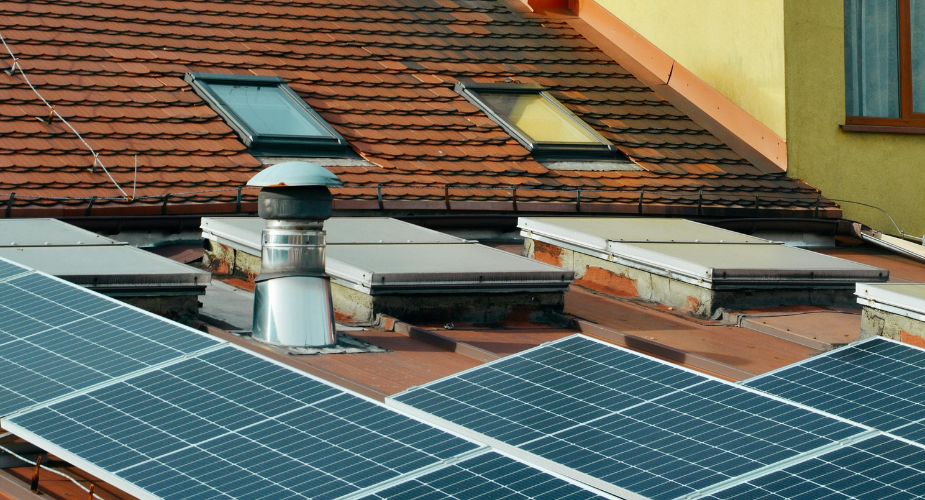The world faces a growing energy crisis fueled by rising demand, depleting fossil fuels, and the worsening effects of climate change. Traditional power sources like coal and oil contribute significantly to global carbon emissions, prompting an urgent need for cleaner, more sustainable solutions. In response, alternative power generation has emerged as a critical pathway toward a greener and more resilient energy future. Fortunately, this blog explores the meaning and importance of alternative energy generation systems, highlighting the latest technologies driving this transition, examining their reliability, and looking ahead to the future of clean energy solutions for a sustainable planet.

A Complete Guide to Alternative Power Generation
- What Is Alternative Power Generation?
- Overview of Alternative Power Generation Technologies
- How Reliable Is Alternative Power Generation?
- Challenges and Limitations of Alternative Power Generation
- Future Trends in Alternative Power Generation
What Is Alternative Power Generation?
To get started, this refers to the production of electricity using renewable and sustainable sources instead of traditional fossil fuels like coal, oil, or natural gas. These alternative power generation technologies include solar, wind, hydroelectric, geothermal, and biomass energy. Unlike fossil fuel-based systems that emit harmful greenhouse gases, alternative sources produce little to no emissions, making them environmentally friendly. Economically, they reduce dependency on imported fuels and promote energy independence. As climate concerns rise and energy demands grow, these technologies offer a cleaner, more sustainable path forward, positioning them as essential components in modern energy systems worldwide.
Overview of Alternative Power Generation Technologies
As more people look for cleaner and more eco-friendly ways to produce electricity, many reliable alternative power generation equipment are becoming more popular. These methods help reduce pollution and offer different ways to create energy using natural sources. Below are some of the most common and useful options available today:
1. Solar Power (Sunlight Energy)
Solar power uses the sun’s energy to make electricity. One common method is through solar panels that turn sunlight into power. Another method uses mirrors to focus sunlight and create heat, which then produces electricity.
If you're looking for a reliable and green power solution at home, the MyGrid 10K Solar Generator for Home is a great choice. It uses solar panels to give you steady electricity for running important appliances, especially useful during power outages or to lower your energy bills over time.
Advantages: Clean energy, sunlight is free, low cost after setup
Disadvantages: Needs sunlight to work well, can be expensive to install
2. Wind Power (Wind Energy)
Wind power uses the movement of the wind to spin turbines that create electricity. Not to mention, this alternative can be placed on land (onshore) or in the ocean (offshore), where winds are stronger and more stable.
A smart option for all-day power is the MyGrid 10K Solar and Wind Generator for Home. This system uses both sunlight and wind, so you can have dependable alternative power generation even when it’s cloudy or at night.
Advantages: Uses natural wind, helps reduce pollution
Disadvantages: Works best in windy areas, can be noisy or large
3. Hydropower (Water Energy)
Hydropower makes electricity from moving water, such as rivers or small streams. Smaller systems cause less harm to the environment compared to big dams.
Advantages: Provides steady energy, produces little pollution
Disadvantages: Needs access to flowing water, may affect local wildlife
4. Geothermal Energy (Earth’s Heat)
This type of energy uses heat from deep underground to create electricity or warm up buildings. It works well in areas with natural hot springs or underground heat.
Advantages: Always available, low emissions
Disadvantages: Expensive to set up, only works well in certain locations
5. Biomass and Bioenergy (Energy from Plants and Waste)
Biomass uses natural materials like wood, crop leftovers, or animal waste to produce energy. Bioenergy can also come from gas made by breaking down organic matter.
Advantages: Makes use of waste, can replace fossil fuels
Disadvantages: Can cause air pollution, may use up land that could grow food
6. Hydrogen Fuel Cells
Hydrogen fuel cells create electricity by combining hydrogen and oxygen. They are clean and efficient and are being tested for cars and home energy systems.
Advantages: No pollution, very efficient
Disadvantages: Expensive, needs special equipment and fuel sources
Each of these alternative power generation technologies offers a cleaner way to power homes and businesses. By using systems like the MyGrid 10K series, which combines solar and wind power, you can enjoy a dependable alternative power generation system that works in different weather and helps reduce your carbon footprint.
How Reliable Is Alternative Power Generation?
Many people wonder if alternative power generation can be as dependable as traditional energy sources like coal, oil, or gas. The good news is that today’s renewable energy systems have become much more reliable thanks to modern technology and better planning.
One big improvement is in how we store energy. Today’s batteries can save power from solar panels or wind turbines, so you can still have electricity even when it’s cloudy or there’s no wind. Smart grid systems also help by managing the flow of energy more efficiently, sending power where it’s needed most, and reducing the risk of outages.
Real-world examples show how reliable these systems can be. For instance, some communities in California and Texas have installed solar panels with battery backup, allowing them to stay powered during blackouts. In Europe, several countries use wind and solar together with storage to power entire towns consistently.
Hybrid systems, like combining solar panels with battery storage or wind turbines with hydropower, are becoming more common. These setups make reliable alternative power generation possible by balancing energy sources. For example, during the day, solar power may be the main source, while at night, stored energy or wind can take over.
A great example is the MyGrid 10K Solar and Wind Generator for Home by Nature’s Generator. This system combines both solar and wind power with battery storage, giving homeowners a dependable source of electricity day and night, perfect for backup power or daily use in off-grid setups.
With the right technology and planning, alternative energy is no longer just clean—it’s also dependable.
Challenges and Limitations of Alternative Power Generation
While alternative power generation technologies has many benefits, there are still a few challenges that make it difficult for some people or areas to switch completely to clean energy.
1. High Initial Costs and Financing Barriers
Setting up systems like solar panels, wind turbines, or battery storage can be expensive at first. Even though they save money in the long run, the upfront cost can be a problem, especially for families or small businesses. Getting loans or financial help for these systems is not always easy.
2. Intermittency and Weather Dependence
Solar and wind energy may depend on the weather. Solar panels need sunlight, and wind turbines need steady wind. On cloudy or windless days, these systems may not produce enough electricity. Without proper storage or backup sources, this can affect how reliable the system is.
3. Infrastructure Limitations in Certain Regions
Some areas don’t have the right setup or support to handle renewable energy systems. For example, rural or remote locations may not have strong electrical grids or easy access to the equipment needed. This makes it harder to install and maintain alternative energy solutions.
4. Public and Political Resistance
Not everyone supports the move to alternative energy. Some people worry about changes to their environment, such as the look of wind turbines or land use for solar farms. In some cases, government policies may still favor fossil fuels, making it harder to promote clean energy options.
Despite these issues, improvements in technology, growing public awareness, and more support from governments are helping make dependable alternative power generation more available and practical for everyone.
Future Trends in Alternative Power Generation
The future of reliable alternative power generation is full of exciting changes. With new tools and more global support, clean energy is becoming easier to use, more affordable, and more dependable. Here are some trends to watch:
1. Smarter Energy with AI and IoT
Smart technology like Artificial Intelligence (AI) and the Internet of Things (IoT) are helping people use energy more wisely. Not to mention, these technologies can track how much energy is being made and used and then decide the best time to save or share it. This helps make sure energy is used efficiently and doesn’t go to waste.
2. Worldwide Support and Policies
Many countries are now making rules and programs to support clean energy. These include offering financial help, encouraging people to go green, and setting goals to cut pollution. This global support helps more people switch to dependable alternative power generation.
3. More Money Going Into Clean Energy
Investors and companies are spending more on alternative systems and other renewable energy tools. As more people invest, the technology keeps improving and becoming cheaper, making it easier for homes and businesses to use.
4. Better Ways to Store and Share Energy
New kinds of batteries and storage systems are being built to save extra energy for later use. Also, electricity networks (grids) are being updated so they can handle power from different clean sources. These changes are important for keeping the energy flowing, even when the weather isn’t perfect.
Thanks to these new trends, proven alternative power generation technologies are becoming more accessible and trusted, helping people all over the world move toward a cleaner and safer energy future.
Conclusion
Using alternative power generation is a smart and important step toward a cleaner and healthier world. With options like solar, wind, and water power, people now have safer and more dependable ways to get electricity at home or work. Even though there are some problems like high starting costs or weather changes, new tools and worldwide support are helping make things better. Products like the MyGrid 10K systems show how easy and reliable clean energy can be. By choosing these better energy sources, we can all help protect the planet for the future.






 10,000W LIFEPO4
10,000W LIFEPO4









